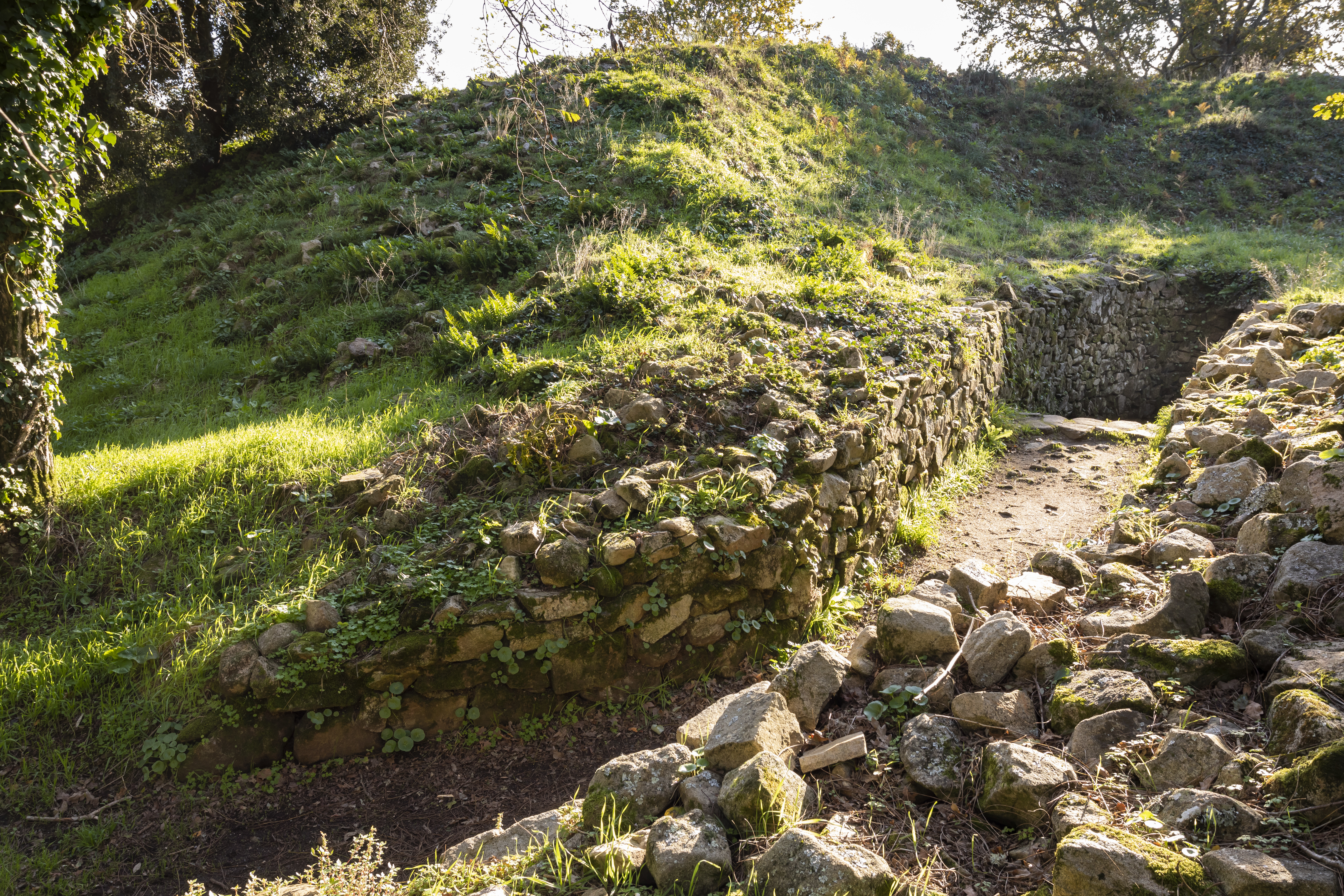Together with the Saint-Michel tumulus in Carnac and the Tumiac mound in Arzon, the Mané er Hroëk tumulus is one of the three enormous, very old, so-called ‘Carnac tumuli’, around which Neolithic architecture is arranged. The tumulus is oval in shape, measuring around 60 metres by 100 metres, and houses a burial chamber. Following excavations of the monument, a staircase was installed to provide access in the nineteenth century. Two large orthogneiss steles are associated with the tumulus; these are located in the wall around the house on the right on the lane leading to the tumulus.
In 1863, René Galles received funding from the Préfet of Morbihan to excavate the Mané er Hroëk tumulus. The splendid grave goods he discovered are preserved at Vannes Archaeology Museum, and were presented to the world at large at the 1867 International Exposition. A stele engraved with handled axes, ‘shields’, and other symbols was also discovered, blocking access to the chamber. This stele has been placed in the visitor centre building at the Table des Marchands site to protect it from damage of all kinds.
At the time of his excavations, René Galles noticed that other monuments could be seen from the top of the tumulus. These included Mané Lud, which he excavated shortly afterwards, Mont Saint-Michel in Carnac, Petit Mont and Tumiac in Arzon, and the Ile Longue and Gavrinis tumuli. Present-day urban development of the area makes it more difficult to see the direct connection between all these sites.
